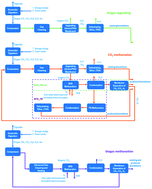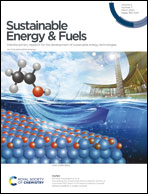Life cycle assessment of power-to-gas with biogas as the carbon source†
Abstract
Electricity generation from renewable sources is increasing and will grow further in the future. Since some of this renewable electricity is intermittent and cannot always be consumed when it is generated, options for matching energy demand and supply are needed. Besides electricity storage, coupling the electricity and gas sectors by converting renewable electricity to hydrogen through water electrolysis can be considered a promising option. With CO2 obtained from various sources, hydrogen can further be reacted to produce methane to facilitate large scale gas storage. Among “Power-to-methane” systems, there are a few pathways designed to utilize the CO2 from biogas. However, studies that quantify life cycle greenhouse gas (GHG) emissions of such systems are limited, yet are an essential basis when comparing such systems with other alternatives regarding decarbonisation of the energy system. This study therefore focuses on addressing this research gap by providing transparent life cycle inventories and analyses and investigating the life cycle GHG emissions of biogas upgrading, methanation with CO2 from biogas upgrading, and direct biogas methanation. These systems are compared with other fuels in the mobility sector. The analysis also provides an estimate of the potential of such systems to reduce GHG emissions on a country level by considering the availability of biomass and the required amount of renewable electricity. In addition, the results are compared with those of power-to-methane pathways using other CO2 sources and literature values. Our analysis shows that using biomethane as vehicle fuel produced by the systems investigated could provide GHG emission reductions of 27–62% compared to conventional natural gas passenger vehicles or 41–70% compared to petrol vehicles. Although the limited resources of suitable biomass will be a constraint to the widespread deployment of power-to-methane systems using biogenic carbon, the available potential should be used, since it represents an attractive option for reduction of GHG emissions in a future energy system with large amounts of intermittent renewable power generation.



 Please wait while we load your content...
Please wait while we load your content...